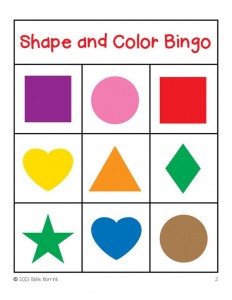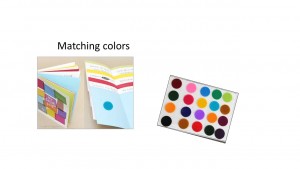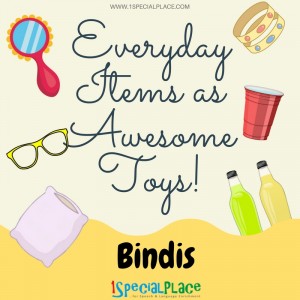Everyday Items as Awesome Toys: BINDIS
Everyday Items as Awesome Toys: BINDIS
Everyday Items as Awesome Toys, The awesomeness of common items in play should not go unnoticed! In this series, we will explore one such common item each time and discuss different ways to play with it.
This article is exploring the everyday item: Bindis
Bindis are easily available in many Indian households. The market has a variety to choose from. Let the child’s preference help guide you, but remember that the child should be able to manipulate (or handle) them.
Don’t have bindis? Don’t worry. You can use stickers of the child’s liking to replace them!
Now, for the games:
 1. Trace it. Draw a shape on a paper. Give the child some bindis and ask him/her to place them on the outline of the shape. Initially make sure the outline is thick and prominent (by using a darker color that stands out).
1. Trace it. Draw a shape on a paper. Give the child some bindis and ask him/her to place them on the outline of the shape. Initially make sure the outline is thick and prominent (by using a darker color that stands out).
 It can be fun to do this on the floor! As a beginner, the child may like to place stickers within the shapes. Go with the flow.
It can be fun to do this on the floor! As a beginner, the child may like to place stickers within the shapes. Go with the flow.
This game is fun, while also builds attention and concentration. Use a lot of language related to directions and shapes.
Everyday Items as Awesome Toys
 2. Transfer it. This game requires two sheets of baking paper. On each sheet draw two different scenes that the child can relate to. Such as, one sheet can have a boat (in water), while the other can have a house. Place stickers on one baking sheet. Ask the child to transfer the bindis from one sheet to another. Make this a language -rich game, by building a story and talking through. For instance, in the sheets above, speak about how the bindis travel in the bus and are going home from school!
2. Transfer it. This game requires two sheets of baking paper. On each sheet draw two different scenes that the child can relate to. Such as, one sheet can have a boat (in water), while the other can have a house. Place stickers on one baking sheet. Ask the child to transfer the bindis from one sheet to another. Make this a language -rich game, by building a story and talking through. For instance, in the sheets above, speak about how the bindis travel in the bus and are going home from school!
The game will also build listening and attention skills.
3. Face it. Place colorful bindis across the face e.g. cheek, forehead, eyebrow etc. Let the child take the bindis off, one by one. Talk about where the bindis are being taken from. Keep the game fun with exaggerated expressions during play! Take turns to keep it engaging.
This is a wonderful game to play to build face to face interactions, eye contact, and language skills while having fun! Kids love this game! Bindis of different colors and sizes can make the game more interesting.
 4. Bingo. Print out simple bingo sheets or make your own (use a simple 4 by 4 chart and fill it with characters your child likes and knows). This is best played with two or more children. Be the Bingo master and call out characters one by one. The child should place a sticker on the character as it is called out. The aim of the game is to cover all the square/characters with stickers, and call out ‘Bingo’.
4. Bingo. Print out simple bingo sheets or make your own (use a simple 4 by 4 chart and fill it with characters your child likes and knows). This is best played with two or more children. Be the Bingo master and call out characters one by one. The child should place a sticker on the character as it is called out. The aim of the game is to cover all the square/characters with stickers, and call out ‘Bingo’.
This is a game to build listening, attention and a healthy competitive spirit. You can make the game more challenging by adding more squares or characters (i.e. by using a bigger chart).
 5. Matching colors. Staple together 4 different colored sheets (e.g. red, blue, yellow and green) into a small booklet. Ensure to have the same colored bindis too. The child is required to transfer the bindis from the bindi sheet to the respective colored paper. For example, the red bindis only on the red colored paper etc. The child is to finish placing all the bindis from the sheet to the paper. This is wonderful to build attention, concentration, matching skill. Use language to stimulate – concepts of color, use words to describing transfer (stick, remove) and turn pages etc.
5. Matching colors. Staple together 4 different colored sheets (e.g. red, blue, yellow and green) into a small booklet. Ensure to have the same colored bindis too. The child is required to transfer the bindis from the bindi sheet to the respective colored paper. For example, the red bindis only on the red colored paper etc. The child is to finish placing all the bindis from the sheet to the paper. This is wonderful to build attention, concentration, matching skill. Use language to stimulate – concepts of color, use words to describing transfer (stick, remove) and turn pages etc.
Hope you’ve enjoyed these ideas! Try them and leave a comment! We’d love to hear from you.
***
Subscribe with us to receive more articles with play ideas in your inbox!
***
Everyday Items as Awesome Toys
If you wish to know more about Speech Therapy, kindly contact us at info@1specialplace.com
https://therakonnect.com/appointments/book/1specialplace
For more ideas check out our other blogs https://1specialplace.com/news/
- What is speech therapy and what Speech Therapist Do? - December 22, 2022
- 5 Simple Ideas to Make Flashcards Fun - June 28, 2018
- Should I use ‘NO’ with my child? - June 24, 2018


Leave a Comment
(0 Comments)